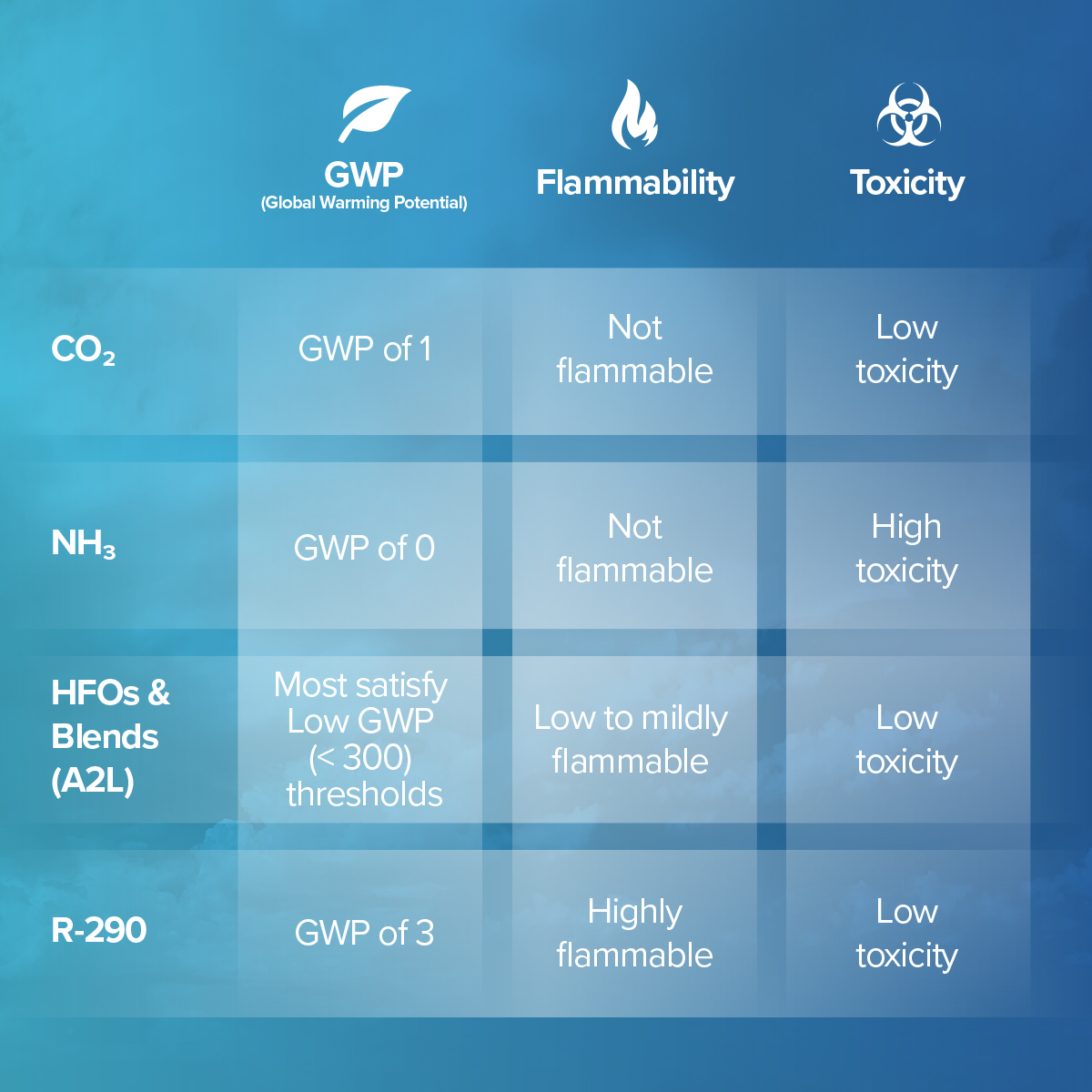Low GWP 101: Learn the Landscape

One of the primary drivers of change in the North American commercial refrigeration and cold storage industry is the introduction of Global Warming Potential (GWP) regulations. You may have heard the acronym “GWP” flying around, and you may even know that it’s the new standard by which regulatory bodies are trying to curb the industrial impact of climate change. But if you don’t know much else about GWP, have no fear. Here is a rundown on what you need to know.
What is GWP?
The Environmental Protection Agency (EPA) defines Global Warming Potential or GWP, as the measure of how much energy the emissions of 1 ton of gas will absorb over a given period, relative to 1 ton of carbon dioxide (CO₂).
Simply put, the higher the GWP, the more a gas is likely to warm up the atmosphere. Much like the auto industry has been heavily regulated to curb carbon emissions, the commercial refrigeration industry is now phasing out high GWP hydrofluorocarbons (HFC) refrigerants in favor of low GWP substitutes.
Low GWP Regulations and Impact on Your Business
For more than 25 years, laws and initiatives across the world have limited HFC production and now the page has turned to limiting usage. There are many regulations which led us to this point but there are two major ones you need to know about in North America: The AIM Act and CARB.
The AIM Act
The American Innovation and Manufacturing (AIM) Act, passed by the U.S. Senate in December 2020, directs the EPA to address the use of HFCs in three ways:
- Phasing down production of HFCs
- Managing the HFCs and their substitutes
- Helping to transition next-generation technologies
This is the framework for the upcoming low GWP regulations.
CARB
The California Air Resources Board (CARB), the first to introduce regulation to be enforced at the U.S. state level, went into effect January 2022. The regulation states that any new refrigeration systems with greater than 50 lb. of refrigerant charge will require refrigerants with a GWP below 150.
If you operate in California, CARB is effective right now! And any new installation you make will need to be low GWP compliant.
CARB, along with AIM, are harbingers for the rest of the country that low GWP regulation is likely to catch on in other states with the possibility of federal regulation as well.

Low GWP Refrigerants
The writing is on the wall: HFCs are on the way out, low GWP substitutes are on the way in. And that’s not necessarily a bad thing! For starters, HFCs will only be more costly to source and use and are proven to do more harm to the environment. Even some HFO blends are unlikely to meet new regulatory requirements. So, what are your options beyond HFCs? Here’s a look.
CO₂ leads the charge in low GWP adoption because it’s a natural refrigerant and provides little risk in terms of toxicity or flammability. Also, with a GWP of 1, it’s essentially future proof for any regulations in place now or to come. Many CO₂ refrigerant systems are already on the market.
Sustainability, Energy and Cost Savings
For the big picture, low GWP regulations are an attempt to lessen the impact of commercial refrigeration facilities on climate change. That’s great for the overall health of the planet, but what are the immediate benefits to your business?
Green, energy efficient operations – It’s no secret consumers, investors and stakeholders of all sorts in your business are more values-conscious than ever before. Going to a greener refrigerant and lowering your emissions output not only makes you more competitive in the marketplace, but also helps you reduce energy costs.
Lowering TCO – Over time, reduction in energy costs, increase in productivity and efficiency due to new technology, energy rebates and avoidance of fines and penalties for HFC usage will contribute to lower total cost of ownership (TCO) and a realization of ROI with low GWP solutions.
Future-proofing – Switching to low GWP refrigerant technology now, especially CO₂ systems, all but insulates you from ever having to retrofit or reconfigure your applications because of new regulation. Businesses who are head of the low GWP curve won’t be scrambling later (any paying extra for it.)
What’s Next?
This was just a brief guide on low GWP, to go in-depth on regulations, refrigerant characteristics, technology and TCO benefits, click here to download our whitepaper or talk to a low GWP expert.
